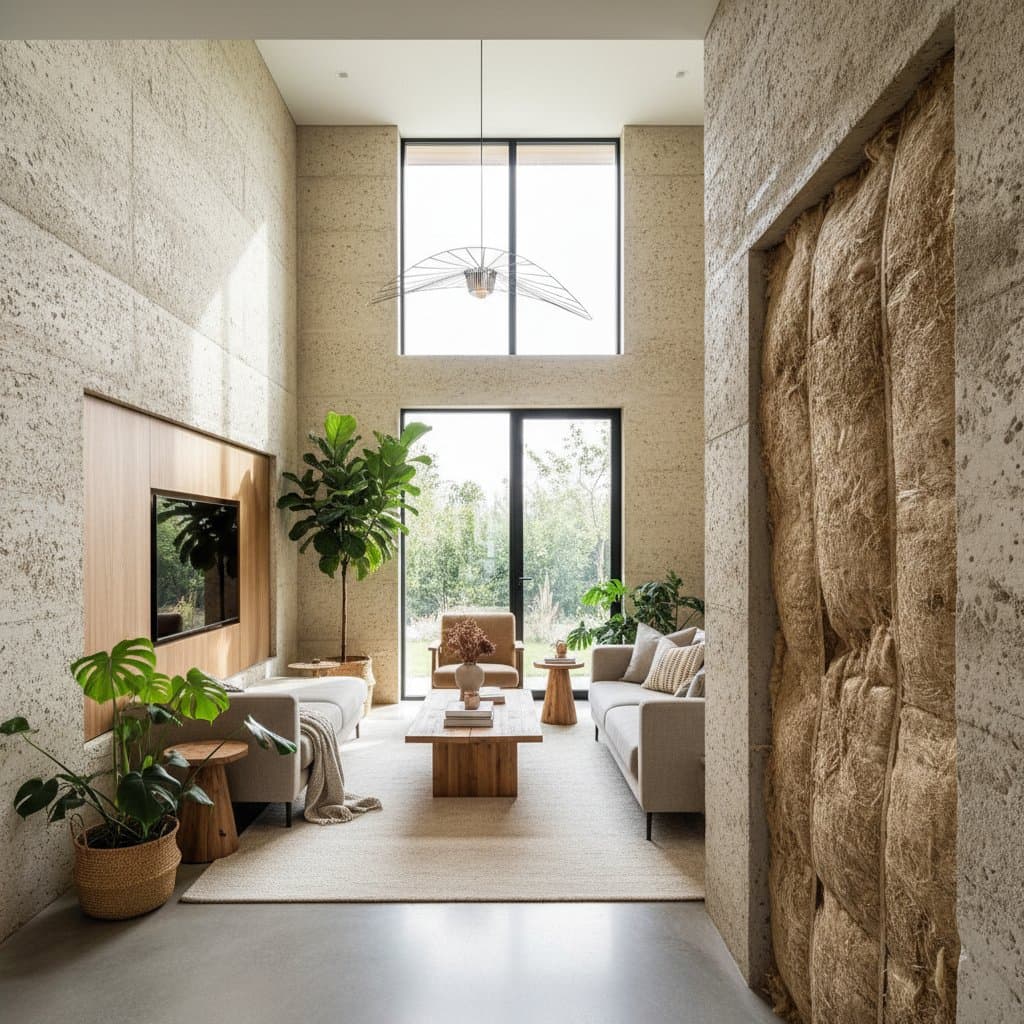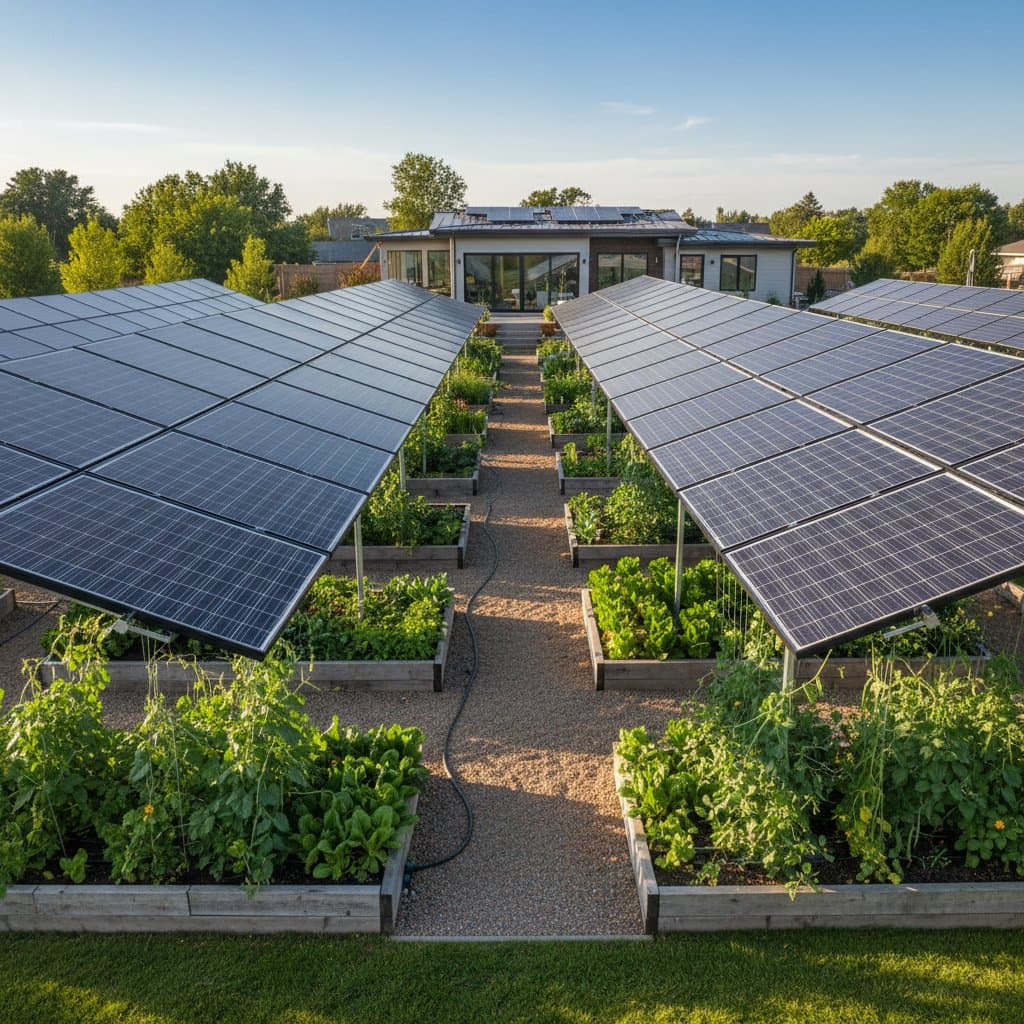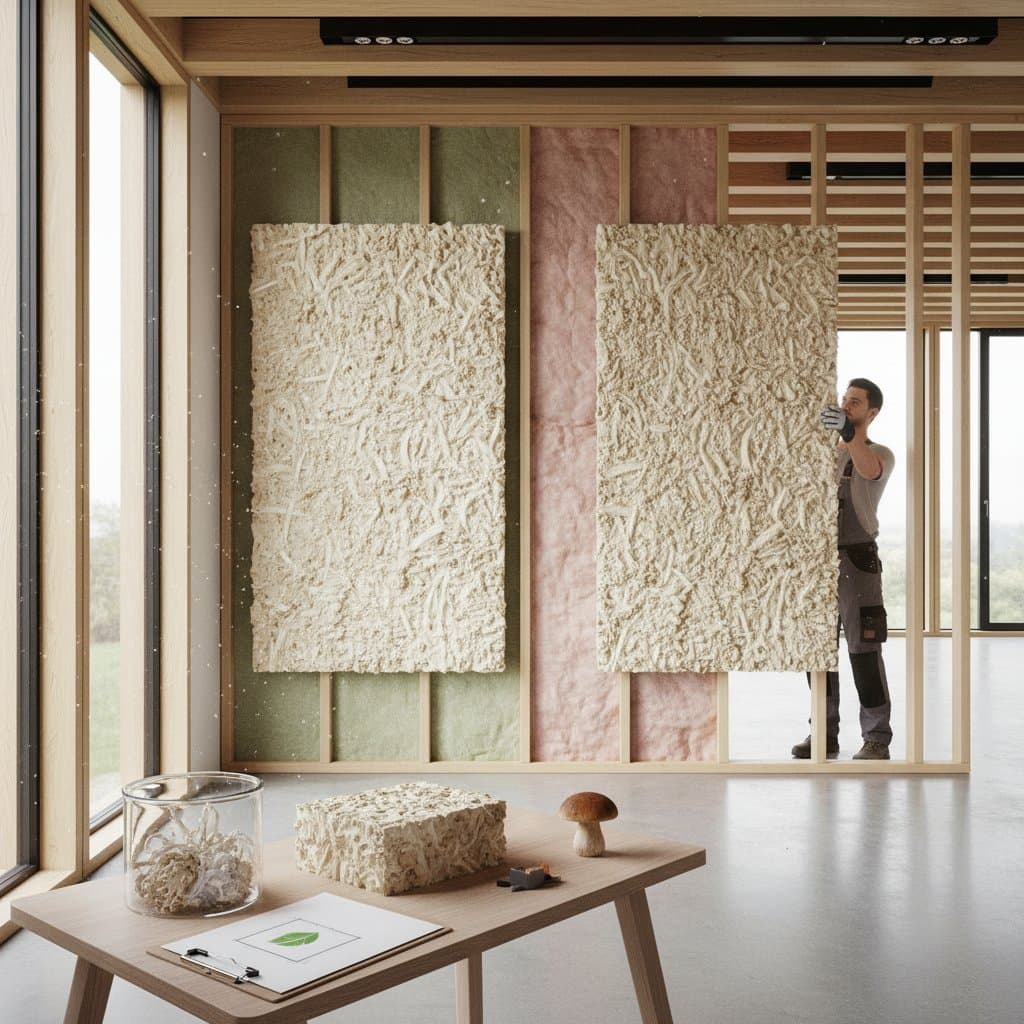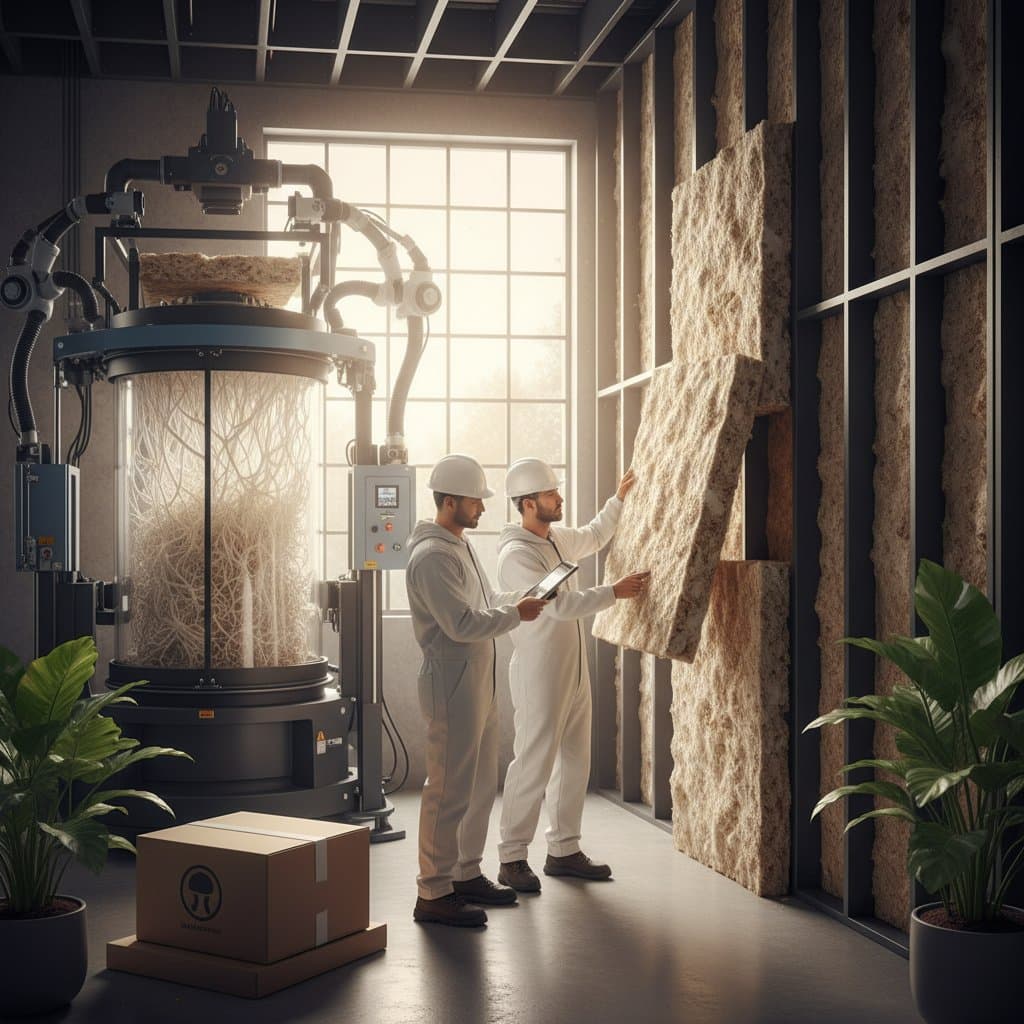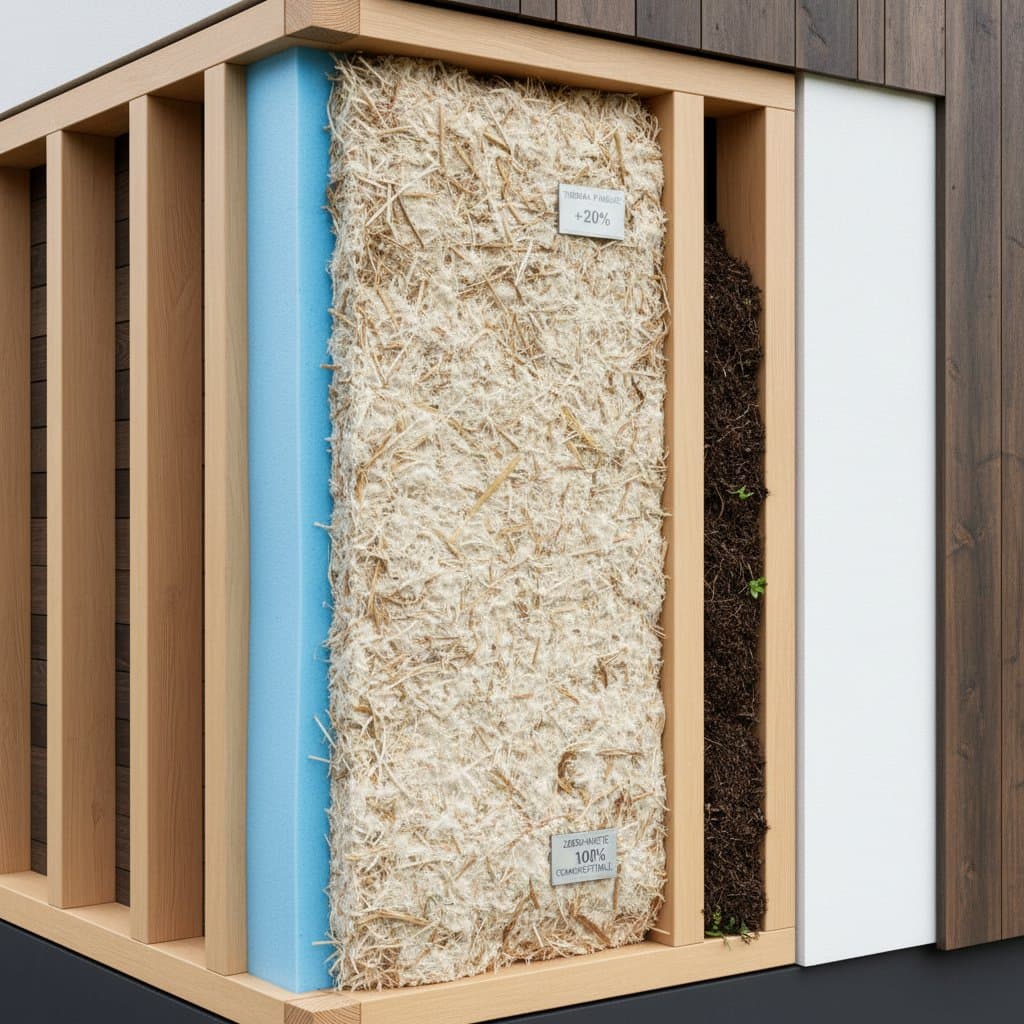Key Points
- Hempcrete is a natural insulation material made from hemp hurd, lime, and water that stores more carbon than it emits.
- It offers excellent thermal performance, moisture regulation, and long-term durability with minimal maintenance.
- While upfront costs can be higher, hempcrete provides strong returns through lower energy bills, healthier indoor air, and improved property value.
- The material fits both new builds and retrofits, making it accessible to a wide range of homeowners.
- Understanding local building codes, moisture control, and curing time helps ensure a successful installation.
A Fresh Take on Insulation
Imagine walking into a home that feels cool in summer, warm in winter, and quietly solid all year round. No drafts, no musty smell, and no guilt about your carbon footprint. That’s the promise of hempcrete, a bio-based insulation material quickly gaining attention among builders and eco-conscious homeowners.
It is not a futuristic invention or a passing trend. Hempcrete is a mix of hemp hurd (the woody core of the hemp plant), lime, and water. When combined, these ingredients create a lightweight, breathable material that stores carbon while providing reliable insulation. It is a rare example of a building solution that manages to be both ancient in concept and revolutionary in modern application.
Why Hempcrete Matters
Every homeowner knows that insulation affects far more than comfort. It drives energy efficiency, influences indoor air quality, and shapes long-term property value. Traditional insulation materials, such as fiberglass or foam, often rely on petrochemicals and can trap moisture, leading to mold problems or degraded air quality. Hempcrete, by contrast, is vapor-permeable, meaning it allows moisture to pass through without trapping it inside walls.
From an environmental perspective, hempcrete is a powerhouse. Hemp plants absorb large amounts of carbon dioxide as they grow, and when combined with lime, much of that carbon remains locked inside the walls for decades. The result is a material that can offset a portion of the carbon emissions generated during construction, turning a typical energy sink into a carbon-storing structure.
Financially, the benefits extend beyond sustainability. Homes insulated with hempcrete often experience energy savings of 30 to 50 percent compared to standard insulation. That means smaller utility bills and less strain on heating and cooling systems. Over time, those savings can balance the slightly higher upfront investment.
Key Considerations for Planning
Hempcrete works differently from conventional insulation, so planning is essential. Here are some main factors to keep in mind before starting:
- Curing Time: Hempcrete sets slowly as the lime binder reacts with air. It can take several weeks to fully harden, so scheduling is important.
- Wall Thickness: To achieve optimal performance, walls are usually thicker than with foam or fiberglass insulation. This can slightly reduce interior floor space but greatly enhances thermal stability.
- Moisture Management: The breathable nature of hempcrete helps regulate humidity, but proper design is still needed to prevent prolonged exposure to water during construction.
- Building Codes: Some jurisdictions require documentation showing that hempcrete meets structural or fire safety standards. It is non-structural by itself, so it must be paired with a supporting frame such as timber or steel.
By addressing these early, homeowners can avoid surprises later and ensure that the project meets both performance and regulatory expectations.
Cost Breakdown and ROI Analysis
On average, hempcrete installation costs range from moderate to high compared to traditional insulation. Material costs often fall between mid-range and premium tiers, depending on the source of hemp hurd and lime. Labor costs can also vary since not all contractors are trained in hempcrete mixing and application.
Still, those initial expenses come with tangible returns. Consider the lifecycle costs instead of just the upfront price tag.
- Energy Savings: A 30 to 50 percent reduction in heating and cooling bills can translate into thousands of dollars saved over a decade.
- Durability: Hempcrete walls resist pests, mold, and fire without the need for synthetic chemicals. This reduces maintenance and replacement costs.
- Resale Value: As buyers grow more eco-conscious, homes built with natural materials often attract higher offers and faster sales.
- Health Benefits: Improved indoor air quality and humidity balance contribute to long-term wellness, which can reduce health-related expenses indirectly.
When viewed as a long-term investment rather than a short-term cost, hempcrete competes strongly with conventional materials.
Design and Layout Ideas
Hempcrete’s flexibility makes it suitable for various architectural styles. It can be cast in place, sprayed between forms, or used as pre-formed blocks. The natural texture and soft gray tone can even become part of the aesthetic, especially in minimalist or rustic designs.
For homeowners planning a remodel, hempcrete works particularly well in these scenarios:
- Attic and Roof Retrofits: It regulates temperature swings and prevents condensation buildup.
- Wall Replacements: When paired with timber framing, hempcrete creates breathable envelopes ideal for humid climates.
- Floor Insulation: Hemp-lime mixes can be poured as subfloor insulation, adding thermal mass that stabilizes interior temperatures.
Unlike rigid foam, hempcrete adapts easily to irregular shapes or older structures, which makes it appealing for renovation projects. Its natural compatibility with wood also means fewer chemical interactions and better long-term cohesion.
Sustainable Features and Efficiency Gains
The sustainability story of hempcrete goes beyond its raw materials. Hemp grows quickly, requires little fertilizer, and improves soil health between harvests. When combined with lime, the mixture continues absorbing carbon dioxide long after installation. This phenomenon, called carbonation, strengthens the material while locking carbon inside.
Thermal performance is another highlight. Hempcrete’s R-value (its measure of insulation performance) may not appear as high as some synthetic materials on paper, but in real-world conditions it often performs better due to its thermal mass and moisture-regulating qualities. Homes feel more stable in temperature, reducing the constant cycling of heating and cooling systems.
Acoustically, hempcrete softens sound transmission, creating quieter interiors. Its resistance to pests and fire adds another layer of resilience. For families concerned about chemical exposure, hempcrete contains no volatile organic compounds, making it one of the healthiest wall systems available.
Factors Influencing Project Success
Several factors influence how successful a hempcrete project will be.
- Climate Conditions: While hempcrete performs well across climates, detailing around openings and rooflines is critical in very wet regions.
- Contractor Experience: Skilled application ensures consistent density and curing. Inexperienced crews may leave gaps that affect performance.
- Material Quality: Sourcing high-grade hemp hurd and properly formulated lime binder makes a measurable difference in strength and durability.
- Integration with Other Systems: Pairing hempcrete with energy-efficient windows and ventilation systems maximizes its benefits.
Each of these decisions shapes how well the final structure meets comfort, efficiency, and longevity goals.
Frequently Asked Questions
Is hempcrete strong enough for structural walls?
No, hempcrete is non-structural. It acts as insulation and a thermal mass around a frame. Most builds use timber or steel framing for strength.
Does hempcrete attract pests or mold?
Neither. The high pH of lime makes hempcrete naturally resistant to mold and insects.
Can it be used in humid or rainy climates?
Yes, provided the design includes adequate moisture protection during curing and appropriate exterior finishes afterward.
What kind of finish can go over hempcrete walls?
Breathable finishes such as lime plaster or mineral paint are ideal. Non-breathable coatings can trap moisture and reduce performance.
How long does hempcrete last?
Properly installed hempcrete can last many decades, even centuries. Its natural components age gracefully without significant degradation.
Does it qualify for green building certifications?
Yes. Hempcrete contributes to points in many sustainable certification frameworks due to its carbon storage, low toxicity, and energy efficiency.
